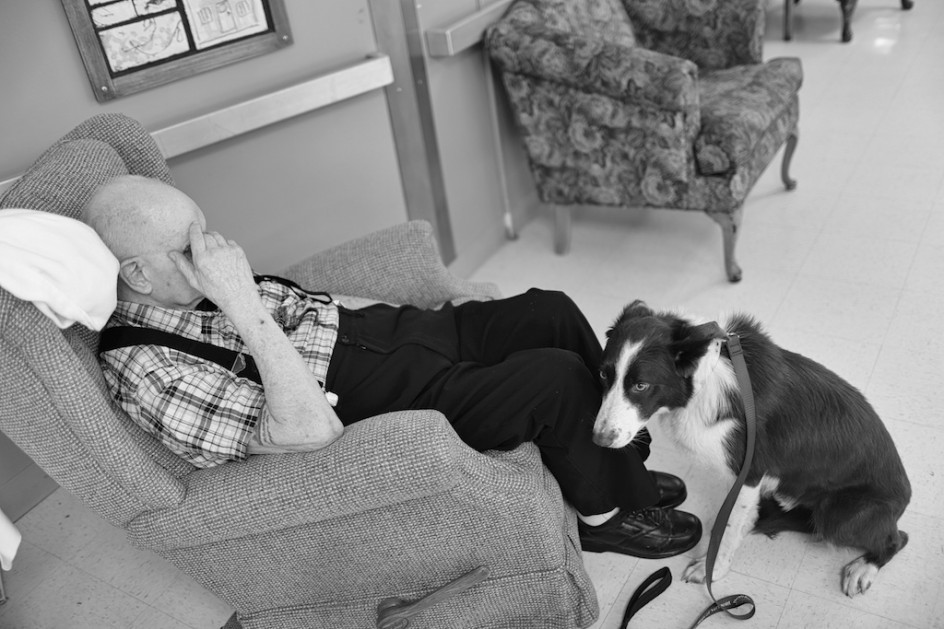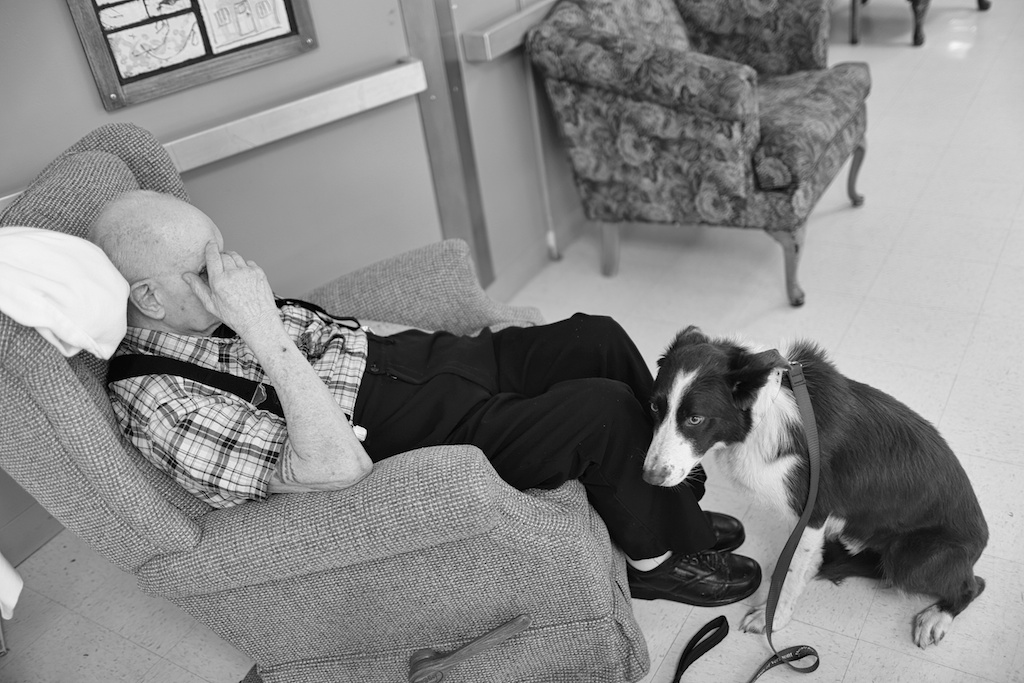
In my writing and Therapy Journal photographs, I tend to show Red in powerful connections with people, but therapy work is not consistent or simple or easy for the dog – it is especially challenging in hospice or dementia units where the patient may be very affected by the dog but cannot show it in ways the dog (or the handler) can easily discern. It’s important with therapy work – as with life – not to romanticize the work or only show the heartwarming and uplifting parts of it. Sometimes it works, not always easy to know.
In the photo above, Red is confronted with a very new challenge, a patient who loves dogs and very much wants to see Red, but who covers his face and looks away, for reasons only he can understand but cannot explain. This patient waved to us to approach, but then turned shy and covered his face, depriving Red of his primary way of making connection – through the eyes, words and facial expressions of the patients. Red approached, as he was commanded, and then stopped.
Without the eye contact, he was confused about what to do. I told him to sit and stay and held my hand out, the signal for him to stay put and wait. The patient saw Red and smiled more than once, but wouldn’t remove his hand. Red stayed with his head down then I called him off and we went to see another patient. He didn’t look up to see the patient’s eyes, he held his head down as if to signal submission or acceptance.
I can’t be sure, and the nurses can’t either, but it seemed as if this patient got some pleasure from seeing Red even though he didn’t touch Red or look directly at him, as Red is used to doings. Therapy dogs in environments like dementia wards are continuously confronted with situations that are surprising and unfamiliar – the mood is different every time we come into the ward. The training is focused on being grounded, staying calm, being reinforced for whatever good approach Red chooses to take, in this case – I never thought of training him for this – being still and doing nothing and let the patient tell his own story of the encounter.

